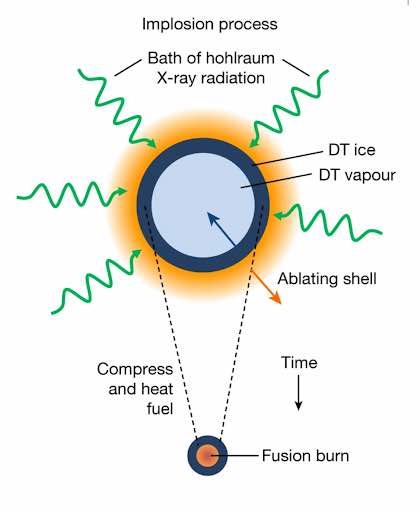You wake up in the morning to a world with clear skies. The air is crisp and fresh, free of smoke or pollution. It’s your day off, so you drive to the beach with friends or family or just by yourself. The water is clean and healthy. As night falls, the city shines brightly in the distance. And you know that it always will.
The power that makes this life possible doesn’t come from some limited resource — nothing that makes the oceans rise or the atmosphere less breathable. And the electricity isn’t intermittent — it doesn’t depend on something as fickle as the wind or sunlight. Prosperity is secure. Life is safe. We flourish.
This is the kind of dream nuclear energy inspires.
Now, we’ve reported on the topic extensively in Energy and Capital; you should catch up on Keith Kohl’s research on small modular reactors if you haven’t already. But what I want to talk about today is the other side of nuclear energy.
Small modular reactors are the next big advancement in fission — but what about fusion?
For those who don’t remember the difference, a quick recap: All nuclear energy derives from the forces at the heart of atoms.
Fission means taking large elements like uranium and breaking them into smaller pieces. This releases the energy stored in those bonds.
Fusion means taking the smallest elements, typically hydrogen, and fusing them together; a small amount of mass is lost in the process, which (remember, E=mc²) produces a lot of energy.
That’s what happens in the heart of the sun.

Challenge accepted.
The difficulty with fusion, and the reason why we don’t have any working fusion reactors, is that you need a LOT more heat to produce fusion than fission. In a fission reactor, the temperature is typically around 600 degrees Fahrenheit. In a fusion reaction, you need to heat plasma to temperatures of 180 million degrees Fahrenheit. That’s over six times the temperature at the core of the sun — we need to make up for the much lower pressures on Earth.
Fusion continues to draw scientific interest because it produces no nuclear waste (the main byproduct is helium), the reaction ends really quickly if something goes wrong, and it requires a lot less fuel — you can produce just as much energy with the hydrogen (technically the “deuterium” isotope of hydrogen) in a gallon of seawater as with 300 gallons of gasoline.
Unfortunately, we’re still far away from a controlled, sustained reaction, or even producing more energy than we put in — what’s called “ignition” in a fusion reaction.
~~ad_0~~
But a few weeks ago, at the National Ignition Facility (NIF) in California, scientists released some momentous results. During a series of experiments in late 2020 and 2021, they shot 192 lasers into a gold box (a “hohlraum”) containing a small amount of hydrogen fuel. The lasers then converted into an X-ray bath for said fuel. This process, called inertial compression fusion (ICF), forces the hydrogen to condense so much that it starts to fuse.

For the first time ever, these scientists successfully produced burning plasma — a fusion reaction that creates enough energy to keep the fusion going on its own sans outside lasers.
That has never happened before. In every experiment in the past, scientists had to keep the reaction going with external energy sources. They couldn’t turn OFF the lasers without turning OFF the fusion. Now, they can.
Our analysts have traveled the world over, dedicated to finding the best and most profitable investments in the global energy markets. All you have to do to join our Energy and Capital investment community is sign up for the daily newsletter below.
It didn’t last long — still difficult to contain, the fuel burst apart very, very quickly.
But now scientists have results they can study — proof that we have the technology to produce a self-powering fusion reaction. This is a huge step toward turning the ocean into a planet-sized gas station.
Of course, there would be limits to fusion even if we got everything up and running — no scientist is imagining self-driving cars with little fusion reactors in the trunk. Isolated places without a connection to the grid would still need their own power sources. Whatever happens, we’re still looking at a huge rise in the demand for materials like lithium for the energy transition; you can see what technology is coming to take advantage of that rising demand elsewhere in our coverage.
But even if fusion is still years away and we have problems to tackle right now, this is something to be excited about.
And it comes at a time when other big news in fusion is constantly hitting the headlines — just a couple weeks after the report from the NIF dropped, scientists at the Joint European Torus (JET) near Oxford produced more fusion energy than ever before in a single experiment.
The plasma, run through a donut-shaped magnetic structure called a tokamak, produced a whopping 59 megajoules of energy over five seconds, doubling the previous record.

All of these milestones should nourish our hope — hope for the kind of future we imagined at the start of this article. And with the International Thermonuclear Experimental Reactor (ITER), the world’s largest fusion facility, coming online in the next few years, there’s probably a lot more hope on the horizon.
Keep on hoping, keep on learning, and keep on imagining the kind of future you want — that’s the first step to building the technology to make it happen. We’ll keep on reporting and let you know how you can be a part of it.
To your wealth,

Zak Rosen
Contributor, Energy and Capital

